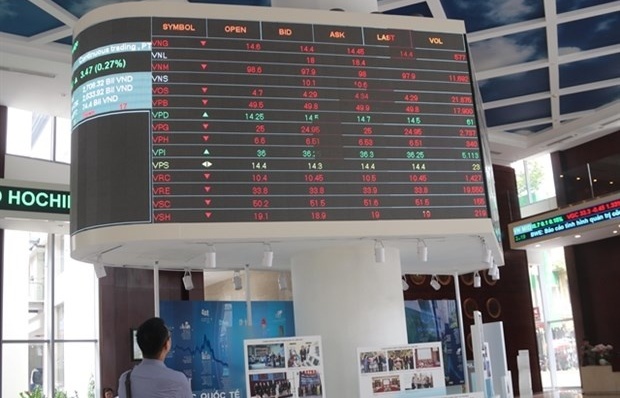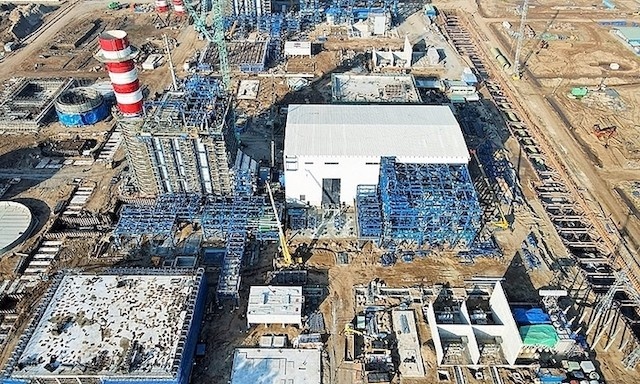Patchy days
 |
| Households and businesses still prefer to hold dollars rather than dong, despite the fact that interest rates in dollars are extremely low. |
At 5.3 per cent for the year as a whole, economic growth in Vietnam was stronger than in most other countries and certainly stronger than many anticipated a year ago. But exports fell by 8.9 per cent in 2009, making it the first year to see a decline since the beginning of economic reforms.
Inflation in 2009 was much lower than in 2008, at 6.5 per cent for the year. But since the last quarter of 2009 it has started to accelerate and was close to 2 percentage points per month in January and February. Combined with an announced increase in the prices of gasoline and energy, some fear that a new “price storm” may be falling upon Vietnam. Inflows of foreign direct investment and overseas remittances were surprisingly resilient, falling by only 13 and 12 per cent respectively, whereas a sharper drop could have been feared. But there has been a clear shortage of dollars, especially at several points during 2009. The “price storm” had not spared the dollar.
Confronted with this mixture of bad and good news, analysts and commentators have reacted in different ways. On the one hand there is much praise for the decisiveness of the Vietnamese Government in responding to the global downturn, for the boldness of its stimulus measures, and for its ability to sustain relatively strong growth in a very difficult international context. On the other hand, concern is frequently expressed about the acceleration of inflation, the balance of payments situation and the risk of (or need for) a faster devaluation of the Vietnam dong.
The recent move by Fitch Ratings to place Vietnam in the negative watch list reflects this second, more negative perception. The longer the current difficulties last the more likely it is that analysts and commentators will forget about the success of the stimulus policies of 2009 and will emphasise the weaknesses of the current macroeconomic situation.
There is some irony in seeing Vietnam confronted with fears about currency devaluation at a time when other countries that were less successful in terms of economic growth are already confronting sizeable capital inflows and taking measures to contain an excessive appreciation of their currencies. The attractiveness of those countries suggests that Vietnam would have much to gain from rapidly stabilising its macroeconomic situation, containing the inflation rate, and removing market uncertainties regarding the balance of payments and the exchange rate.
Since October 2009 the government has actually taken important steps towards rebalancing its overall policy stance, from only stimulus to a greater focus on macroeconomic stability.
The budget plan for 2010 foresees a reduction in the budget deficit. Estimating how large the reduction could be is difficult, because uncertainties remain on budget execution. But a decline by 2 to 3 percentage points of GDP seems plausible. The monetary plan for 2010 foresees banking credit growing by 25 per cent, which may be high by international standards but would be among the lowest rates in a decade for Vietnam and certainly less than the 37.7 per cent growth observed in 2009. The prime rate was increased by one percentage point in December 2009 and in February 2010 the government took the important step of allowing lenders and borrowers to negotiate most interest rates. A slowdown in the growth of credit has been noticeable over the last few months.
The combination of a more restrained fiscal policy and a less expansionary monetary policy should help contain aggregate demand and slow down inflation and reduce the pressure on the balance of payments.
The dong was also devalued, in November 2009 and February 2010. Taking into account the changes in the width of the flotation band, the combined effect of these two devaluations was to increase the domestic price of the dollar by 8.9 per cent. By now, the exchange rate in the parallel market is only 1 to 2 per cent above the upper limit of the band, compared to more than 10 per cent in late 2009.
In addition, the government is adopting important measures to minimise the risk of a crisis. It has taken stock of the foreign currency holdings of economic groups and large State corporations, and could mobilise them if needed. It also continues to steadily raise the minimum capital requirements for commercial banks, and it is ready to support an orderly process of mergers and consolidations to absorb the smaller banks which could fail to raise the necessary capital into bigger institutions. As for increases in the price of gasoline and energy, they certainly increase inflation in the short term. But the removal of subsidies and market distortions is important to ensure price stability in the medium term.
While most analysts and observers recognise the importance of these moves, and very few actually anticipate a macroeconomic crisis, it is not clear that confidence has been fully restored. Households and businesses (including state owned enterprises) still prefer to hold dollars rather than dong, despite the fact that interest rates in dollars are extremely low. During 2009, this shift in the composition of portfolios towards foreign currency may have reached an astonishing $9 billion. Total foreign currency holdings by economic groups and large state corporations could be only marginally lower. And there are no obvious signs of a massive return to the dong for now.
This lack of confidence in the dong confronts the government with a dilemma.
One possibility is to stick to the set of measures announced so far and wait for the (relative) tightness of banking credit to gradually force households and businesses to sell some of their foreign currency holdings in order to address their liquidity needs. Dollar sales should bring the parallel exchange rate down into the official flotation band. After some time it would become clear that macroeconomic instability is receding. A stable exchange rate should help contain inflationary pressures.
However, even if this approach was to work smoothly it would entail a period of muddling through. Given the prevailing confusion on where the economy is headed to, there could be more negative assessments of the macroeconomic situation by analysts and commentators for quite some time. And adverse market sentiment could make it difficult to get out of the muddling through.
Another possibility is to send clearer signals to the market, in particular by making placements in dong more attractive. There is understandable concern that higher interest rates could undermine economic growth, at a time when the recovery of the global economy is still fragile. But at present, the prime rate is 8 per cent, whereas inflation has already reached 9.5 per cent in the year to March 2010. This means that in real terms the prime rate is negative. And the alternative to raising policy rates is to continue muddling through, getting negative assessments of the macroeconomic situation, and failing to capitalise on the growing interest by investors from rich countries to acquire assets in emerging economies.
Making the dong more attractive could actually trigger a virtuous circle. If households and businesses shift even just a fraction of their current foreign currency holdings to dollars, that will put downward pressure on the parallel exchange rate. A decline in the parallel exchange rate, in turn, would make dollars an even less attractive investment alternative. Not only is the interest rate in dollars very low, dollars could also be worth substantially less by the time placements reach maturity. This dynamic could be amplified if investors in rich countries decide that the situation has stabilised and acquiring assets in Vietnam is a safe bet.
Nothing comparable to the portfolio inflows of 2007 should be expected, of course. But the combination of some inflows from abroad, and the selling of some of the $9 billion accumulated by households and businesses in 2009, could have a significant impact on monetary policy. The State Bank of Vietnam would gain reserves, and in doing so it would also be injecting dong into the economy. Meeting the 25 per cent target for credit growth could be more difficult under these circumstances. In an unusual way, a higher interest rate now could result in a better growth performance in 2010.
What the stars mean:
★ Poor ★ ★ Promising ★★★ Good ★★★★ Very good ★★★★★ Exceptional
Latest News
More News
- MB finalises strategy for acquisition of distressed bank (April 22, 2024 | 16:33)
- Vietnam central bank postpones gold bar auction (April 22, 2024 | 15:27)
- Benefits of pension funds must be incentivised (April 22, 2024 | 15:00)
- KRX trading system to begin official operation (April 22, 2024 | 14:09)
- Voluntary pensions to rejuvenate the sector (April 22, 2024 | 14:00)
- Gold market reforms paramount to stability (April 22, 2024 | 10:18)
- Loopholes continue to play part in rising NPL ratios (April 22, 2024 | 10:13)
- Techcombank scoops two Stevie Awards (April 19, 2024 | 18:35)
- SBV outlines restructuring plans for troubled SCB (April 19, 2024 | 18:27)
- Vietnam’s road to emerging market status (April 17, 2024 | 10:00)


















 Mobile Version
Mobile Version